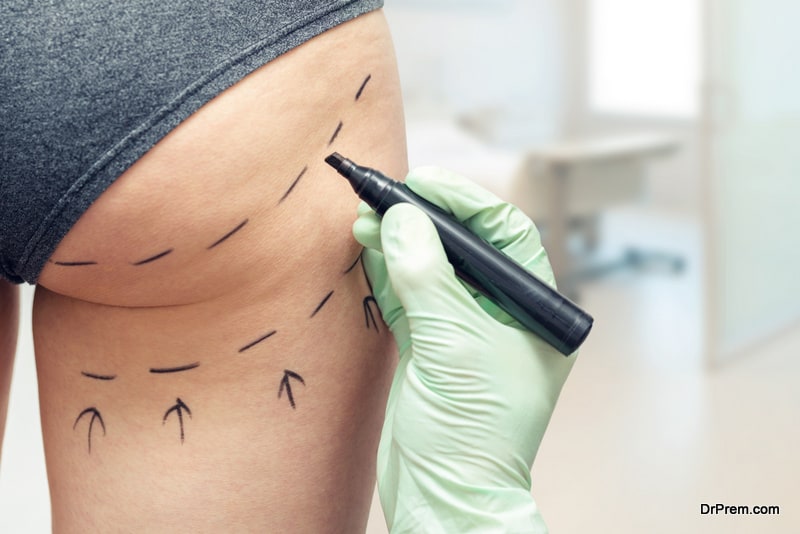Definition:
- A buttock lift or butt lift is a form of cosmetic plastic surgery performed to lift and firm sagging or droopy buttocks and thereby improving the tone and tautness of the skin. This procedure gives the buttock a smooth, contoured appearance. The procedure can be combined with surgeries like liposuction, thigh lift and abdominoplasty
- Many women are concerned with the small size of their buttocks and want to have them enhanced. To enlarge the buttock size two type of buttock implantation surgeries are performed: 1) Brazilian Butt Lift—also called fat injections, fat transfer or fat grafting, 2) Butt implants – insertion of silicone implants.
Details of Procedure:
The aim of the surgery is to reform a saggy buttock into a tight, toned and smooth one. The buttock lift is advised in the following cases:
- Buttock has become saggy due to hormonal changes, extreme weight loss or aging.
- Thighs have a crinkled, dimpled or flabby appearance due to lack of exercise or cellulite.
- Buttocks look asymmetrical or lumpy because of burns, wounds or injuries.
- Misshapen buttock due to congenital defect or obesity.
Facts and Figures:
- Bartels and his colleagues had attempted to surgically contour the buttock in 1969 for the first time.
- According to the recent statistics from the American Society for Aesthetic Plastic Surgery, butt augmentation surgeries had increased up to 37.3% from 2008 to 2009 and butt lifts increased by 24.6% in that year.
- Celebrities like Jennifer Lopez, Beyonce, Rihanna and Kim Kardashian have played a role in popularising buttock contouring procedures.
Advantages & Disadvantages:
Advantages:
- Less hospital stay as most patients are released form care within 2 days of their procedure.
- Patients seeking a butt lift through medical tourism can return home within 17 to 21 days of their procedure.
- Great satisfaction with results; the new flattering and toned look of the buttocks adds to an individual’s self confidence.
Disadvantages:
- Results might not be on par with expectations.
- Chances of contour irregularities, resulting in uneven looking buttocks.
- There can be a persistent numbness for longer time.
Risks and Complications:
- Blood or fluid collection.
- Scarring
- Reaction to anaesthesia or medication.
- Bleeding
- Infection
- Breathing problems
- Scarring
- Hematoma
- Lumps
- Fat necrosis
Pre-Operative and Post-Operative care:
Pre-operative preparation:
- Plan surgery after or before menstrual period.
- Inform the surgeon about any allergies related to food, drug or environmental elements.
- Medical tourists are advised to select a comfortable hotel room equipped with handicapped facilities after hospital discharge.
- Physical examination
- Consultation with surgeon or doctor a week prior to procedure; obtain a list of medication that you need to start taking and any that you need to discontinue.
- Inform the surgeon about smoking and alcohol consumption patterns.
- Arrangements for leave from work, help at home, help with driving and during rehabilitation program.
- Do not eat or drink anything after midnight the night before surgery.
- Pack easy to wear clothes
Post-Operative care:
- To ensure a speedy and healthy recovery, patients must follow the surgeon’s instructions carefully
- Most patients experience swelling for about 3 months following surgery
- After the surgery patients will be required to wear a compression garment that aids healing and helps skin adapt to its new contours
- Patients are advised to drink lots of fluids
Do’s, Don’ts and Precautions:
- Do not to sit on directly on the buttocks for 3 weeks.
- Do wear compression garment for 2 weeks.
- Do not perform vigorous physical activity for about 3-6 weeks.
- Do start light activity after 4 weeks.






